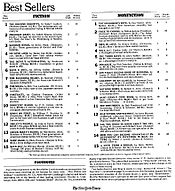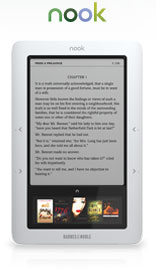 In the April 27 Industry News from Publisher’s Weekly, Amazon reported that sales in their ebook division jumped 63% in the first quarter of 2011. That was pretty much their good news. Their bad news, underlaying a certain amount of spin, was that even though revenues were up across the board, their actual income was down. What’s up with that? Amazon is investing in even more technology and more infrastructure to meet ever-increasing demands.
In the April 27 Industry News from Publisher’s Weekly, Amazon reported that sales in their ebook division jumped 63% in the first quarter of 2011. That was pretty much their good news. Their bad news, underlaying a certain amount of spin, was that even though revenues were up across the board, their actual income was down. What’s up with that? Amazon is investing in even more technology and more infrastructure to meet ever-increasing demands.
According to the report, Kindle owners are larger-volume ebook buyers than non-Kindle owners. That can’t be a surprise, considering that Kindle owners are locked into purchasing ebooks from Amazon. This is a marketing strategy that is older than dirt, after all. The earlier version went something like this: “the razor is cheap, it’s the blades that are expensive.” The new, cheaper advertising-supported Kindle is being released early in order to take even greater advantage of this.
Amazon’s recent announcement that they will provide Kindle format ebooks via Overdrive is also part of this strategy. Up until this week, Kindle owners couldn’t borrow ebooks from their libraries. Now, they know they will soon be able to, for an admittedly undefined value of soon. This eliminates a clear advantage that Barnes and Noble’s Nook had. However, to recap the latest round of the ereader wars, B&N just announced a major upgrade to the color Nook that pushes it way above just an ereader. The review of the new color Nook in this morning’s USA Today shows that the new Color Nook is more of a baby Android powered iPad than just an ereader.
But back to the point about Kindles, what this means is, more reasons for people to buy Kindles or fewer reasons for people not to buy Kindles, so, more Kindles out there. And Kindle owners buy more ebooks from Amazon than non-Kindle owners, however else they might get their ebooks. The announcement about the Amazon/Overdrive deal got an amazing amount of press for something relating to libraries, but it was all related to the fact that the name “Amazon” was in it. Amazon got a lot of mindshare out of something that will probably cost them next to nothing.
It’s also clear from the sheer numbers that ebook buyers actually buy more books than print book buyers. No surprise there. If you are sitting in an airport, shopping for ebooks before your flight, guessing what you’ll like, there is a certain amount of glee at the sheer ease of purchasing without having to think of carrying the things. There are other factors. Ebooks are still generally cheaper than hardcovers, Michael Connelly notwithstanding. There is also the instant gratification factor that simply can’t be underestimated.
What does this mean for libraries? Just Amazon saying that Kindle users would be able to borrow ebooks from libraries generated huge press, even without specifics. Demand for ebooks, which is already huge, is going to skyrocket. The amount of general interest press that covered the Amazon announcement showed that ebooks and ereaders have reached well beyond techies and young people and whatever early adopter market people might have thought and spread well into general users everywhere. For anyone who doubts this, next time you travel, while you are at the airport waiting for your flight, just look around at the number of people reading on ereaders or iPads vs. “dead tree” books. The percentage will be 1/3 or more.
Many public libraries have the collection philosophy “give ’em what they want”. It is due to that philosophy that we have invested heavily in best selling fiction, and moved as deeply as we have into AV material. But ebooks seem like a whole new ball game in some ways. Especially since we are trying to divide a budget pie that is shrinking into an increasing number of pieces, and ebooks are just another piece. The same title is now demanded in print, large print, audiobook, ebook, and eaudio, and multiple copies of each. Meanwhile the demands for DVDs, music and children’s material certainly have not gone away. Because ebooks are new, it can seem simplest not to invest, or not to invest a lot, to say that there isn’t enough demand in the community, or that the library can’t afford it. Or that people still want print books, not ebooks. But if you build a good ebook collection, they will come. It takes time and money. Unfortunately, those are the two commodities no library seems to have enough of these days.
However, the demand for ebooks is like the proverbial snowball rolling down the hill and picking up speed, as well as rocks and twigs, as it rolls down. If your library has that philosophy of “give ’em what they want”, then ebooks are looking more and more like what a significant segment of the public wants. The trick will be smoothing the rocks and twigs out of that snowball as we give it to them.




